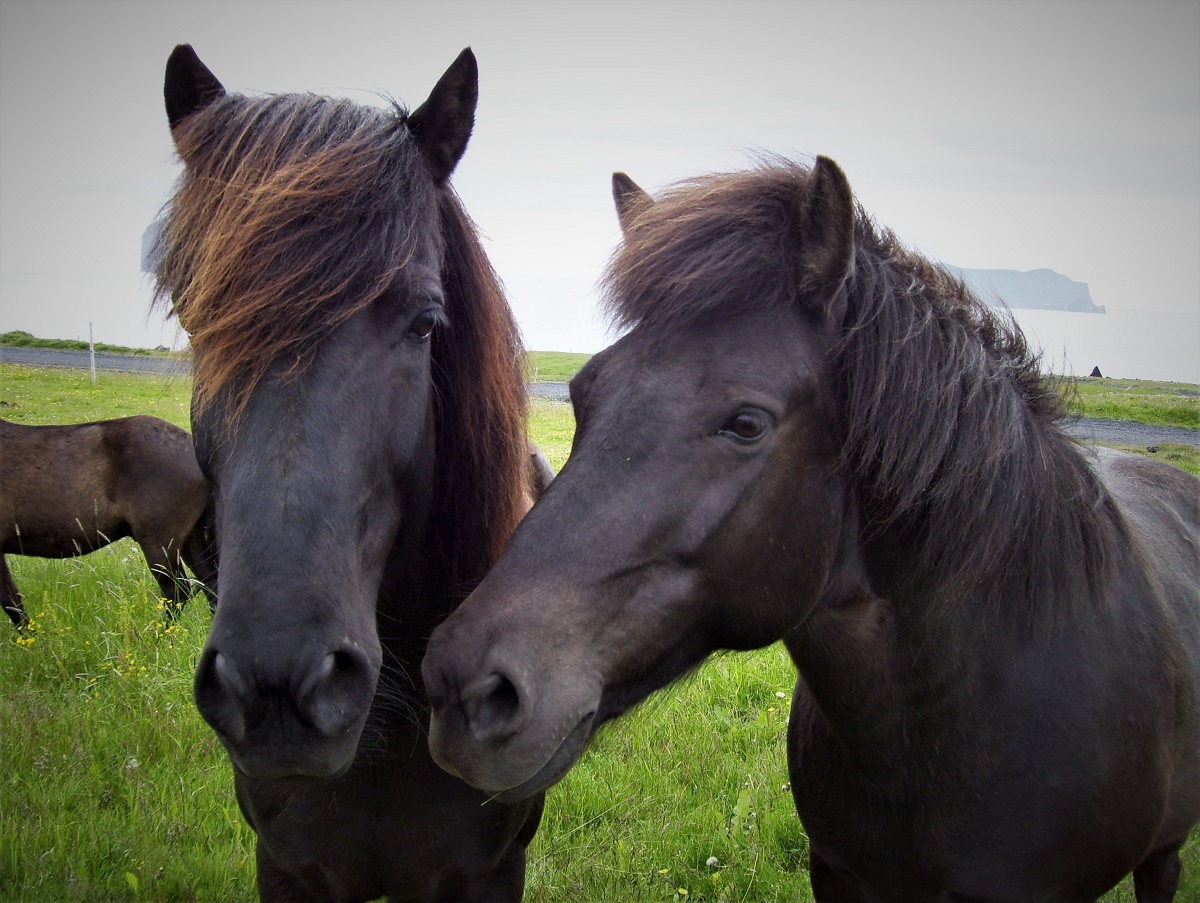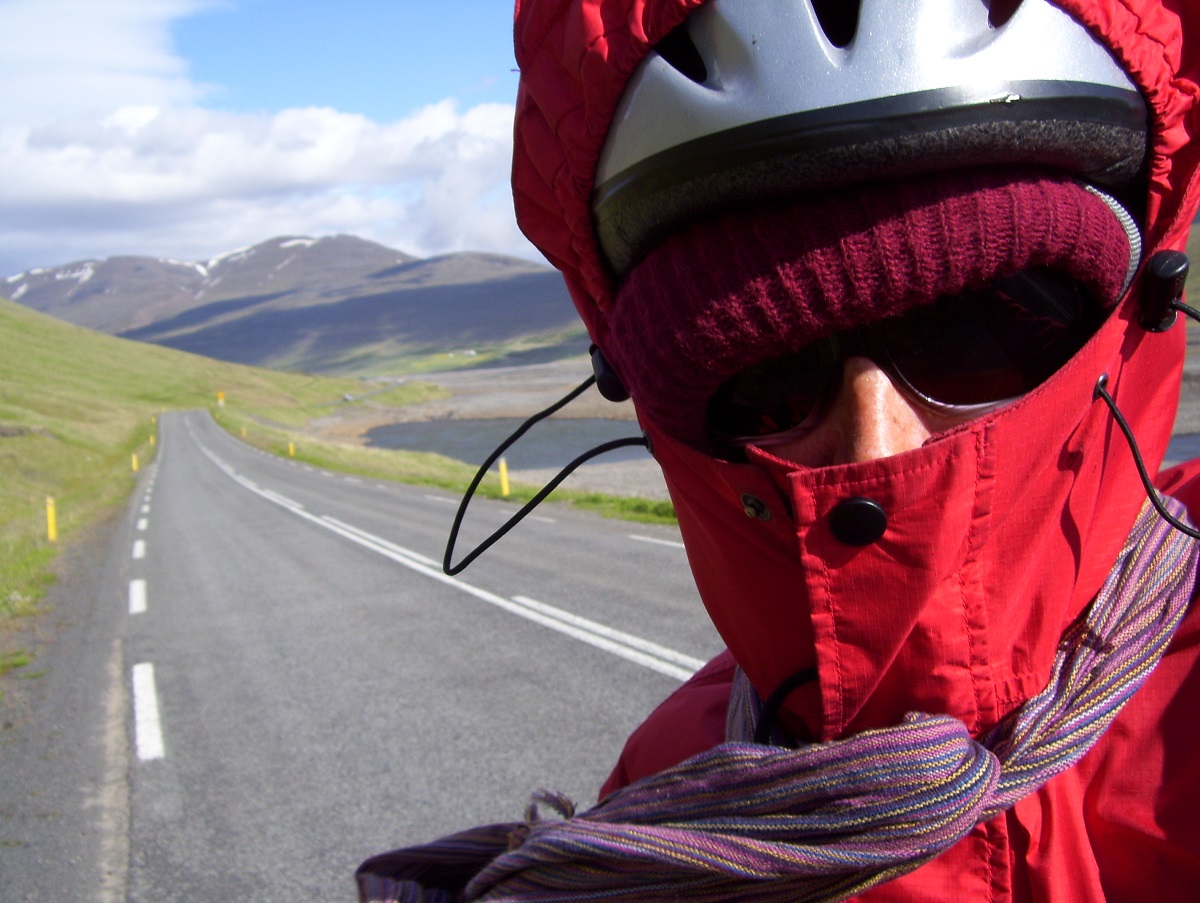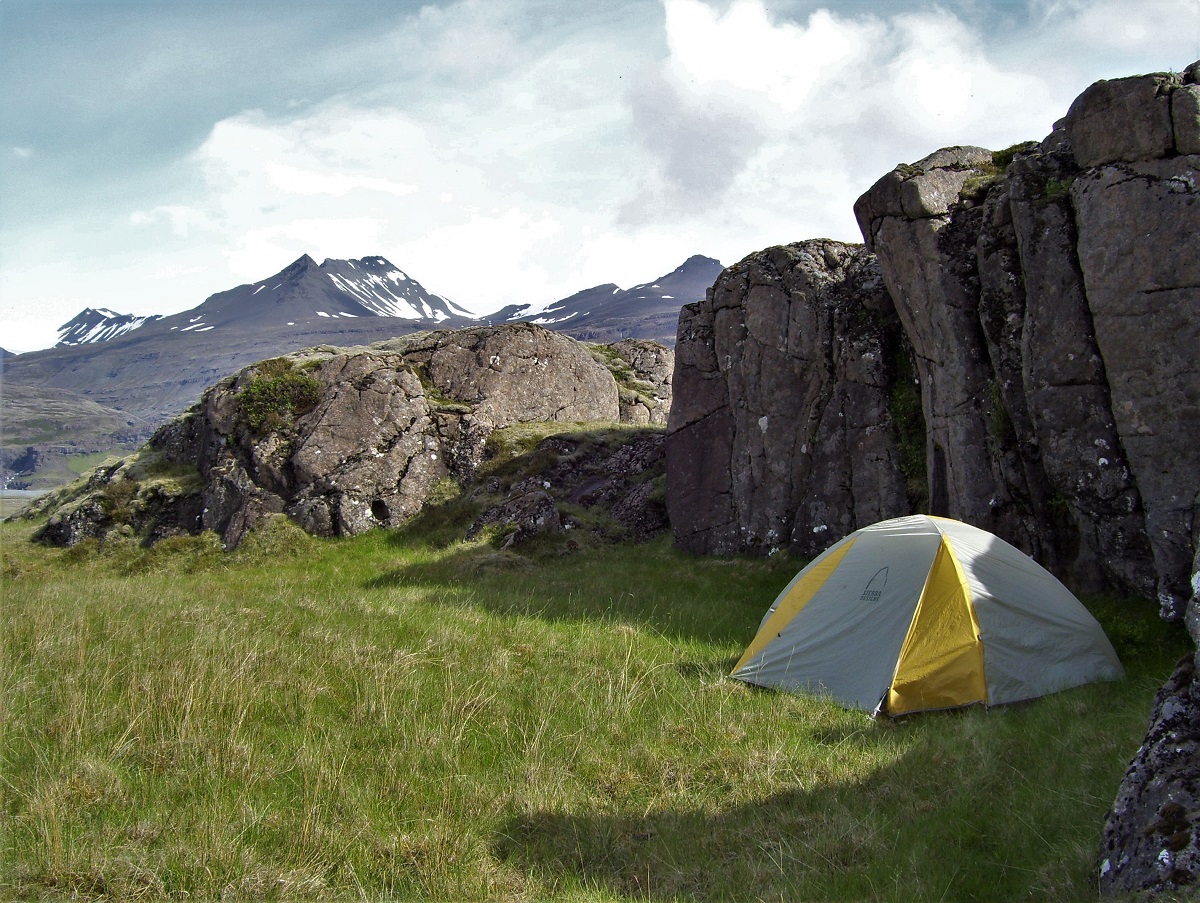Beyond the Doorstep Mile
Continued from Setting Me Loose
As I biked out of the airport, I felt almost giddy. The air was cool, and the road stretched forward in a long, silent curve. It was dawn in Iceland, and I had the road mostly to myself. But where would it lead me? I hadn’t a clue.
In the span of a single week, I’d left my job, stowed all my belongings, and reinvented myself as an adventure cyclist. The preparation had been sudden, intense, and stressful. I had no cycling experience. I knew almost nothing about Iceland. But here I was, pedaling.
Looking back on this moment thirteen years later, I still remember the feeling I had as I biked forward. It was a subtle breaking from what was met with a sense of focused power. I was going to do this thing, and it was real and scary and funny altogether. I was, for once, fully present.
You would think that this energy would have churned me along for hours. Instead, I pulled over almost immediately for a nap. I just stopped, wheeled my bike into a patch of scrub brush, and hunkered down to sleep.
Scary as that was, it also gave me a weird sense of confidence. I would simply have to figure it out.
Dawn and dusk in the arctic are long, languid events, and beneath my giddiness was exhaustion. I didn’t know when the sun would fully rise, but I figured it would wake me when it did.
A few hours later, I opened my eyes to the soft gray of misty sunshine. I turned my face to the right and saw that I had camped close to a bird’s nest full of eggs. They were speckled and delicate, and I paused at their fragility. Then I ate some food from my pack, stuffed my sleeping bag in my pannier, and headed out for the day. What a strange new life.
The road that had been so quiet at dawn was packed with traffic during the day. Cars and trucks whizzed within inches of my shoulder. It felt dangerous. But now my adrenaline was pumping, and I plowed forward.
My plan was to follow Route One around the island. I had a paper map and a guidebook for navigation, and my return flight left in a month. With no idea how difficult the cycling would be, it was a complete gamble that I would make it at all! Scary as that was, it also gave me a weird sense of confidence. I would simply have to figure it out.
After a few hours, the traffic began to subside, and around this time I realized how horribly painful cycling was. The bike seat dug into my crotch in a terrible way. But it was okay — at least for a while — because as city traffic slowed, Iceland unfolded.
Small hills rose up in a rolling, vivid green, and the sky sparkled a bright, happy blue. I stopped frequently to say hello to horses with wild manes. And the sheep! They were everywhere and better than anything I could have imagined. Each one ambled under a massive, mythical rug of shaggy hair. I wanted to hug them all.

In the afternoon I stopped at a grocery store to resupply. My guidebook described traditional Icelandic food as “body parts from a slasher movie,” and highlighted delicacies like stuffed sheep stomach, smoked puffin, and fermented shark. Without a stove and on a budget, I wondered, would I be able to afford enough fermented shark? Would sheep stomach come pre-cooked? Did I want to eat puffin or NOT want to eat puffin? There was so much to think about and so much to learn.
I walked the aisles of the grocery store, peering at all the cans and boxes. I found crackers and sandwich supplies, but no animal parts that shocked me. I was vaguely disappointed until I came across a section with plastic bags full of dried fish. It was Harðfiskur, a dried haddock, ripped into strips. My guidebook described it as “a popular snack, eaten with butter.” I loved snacks, and I loved butter! I bought my first of many bags of Harðfiskur.
When I got back on the bike my body felt good, with the unfortunate exception of my nether regions, which felt like they’d lost a fistfight. I tried to ignore it and hoped I would feel better with time. That evening I set up my tent in a field and pulled out my dried fish and butter. The fish was brittle and flaky, but when I spread enough butter on it, it sort of held its form. It did not taste very good, but I loved it anyway.
I poked through my guidebook and studied the route ahead. The next day I would arrive at the turnoff for Gullfoss, one of Iceland’s most popular waterfalls. But getting to the waterfall meant a 70-kilometer detour. I sat and watched the dusk fall in long, slow, shadows on the hillsides. At this latitude the sun barely set, and the evening golden hour lingered in slow motion. I decided to go for Gullfoss.
In the morning I woke up to something pushing against the sides of my tent, like a giant hand trying to shove everything over. I opened the zipper and stuck my head out to a wind that slapped me in the face. Iceland’s notorious wind had caught up with me. I struggled to fold up my tent and pack my panniers. If I lost my grip on anything, it would be gone forever.

While my legs were a little sore, my crotch was quite swollen and red. Getting back on the bicycle was like balancing my whole body on top of an open wound. And this time I struggled to move forward at all. The wind buffeted my body and shoved the bike back and forth in all directions. I put my head down and pedaled forward, bracing my shoulders against the gusts. But the wind was so erratic that just as I pushed in one direction, it stopped and hit me from another, like an evil dance partner, flinging me in all the wrong ways.
Eventually, the wind fell back, and I arrived at Gullfoss in the late afternoon. I locked my bike to a parking lot railing and unclipped my helmet. The wind had disheveled me in a glorious way. My hair stuck out like sweaty cardboard, my clothes were covered in dust, and even my skin seemed rearranged. I felt bedraggled but resolute.
Just a few days ago I had been working in a nightclub, batting fake eyelashes at drunken men; now I was standing in a parking lot in Iceland, covered in wind-blown filth. I had no idea what I was doing there. And that was the best part.
Tourists wandered around in expensive jackets, and I followed a line of them to a cliffside. The waterfall crashed downward in giant tiers, and a perfect rainbow dangled in the mist. It was beautiful and certainly impressive, but suddenly I felt strange. I watched the people watching the waterfall. They squinted behind long camera lenses and tweaked the knobs on their tripods. Were all of us just here to take pictures of impressive things? And if so, why? It troubled me in ways I couldn’t put my finger on. I snapped the requisite photos and got back on my bike.
That evening, I camped near a river and was careful to pitch the tent on the lee side of a rock windbreak.

When I woke up in the morning my crotch was so sore that I didn’t want to get back on my bike. With a sense of foreboding, I realized that something had to be wrong — biking could not possibly be this painful. I rolled out of my sleeping bag and went outside to stare at my bike. I hadn’t dared to examine it since I put it together at the airport, and it still shocked me that it worked at all.
However, now that I looked at it, the seat it did strike me as a little odd. Instead of sitting parallel to the bar, the nose angled upward like a breaching whale. Clearly, I had not attached it correctly. I slapped the seat with my palm to see if that would fix it. It did not.
My heart filled with the dread of shattered denial, and I clawed through my repair kit for a tool that would fit the bike seat adjustment thingy. Most people would call this tool an “Allen key.” But I was not on a first-name basis with this particular Allen. After a nervous period of desperate fiddling, Allen and I actually managed to arrange the seat parallel to the top tube. It was perhaps the simplest adjustment anyone has ever had to make on a bicycle, but for me, I felt like I had miraculously swindled fate. Here I was, doing all the things I didn’t know how to do.
It took a few days for my battered hoo-ha to forgive me, but after that, riding was much more comfortable. Soon the road turned toward the ocean, the traffic dwindled, and I felt freer. I filtered water from streams and even took an occasional, discrete bath. Each evening I camped wherever I landed, and eventually, I stopped wearing a watch.
As my feet pushed the pedals, my thoughts drifted in and out and floated away behind me.
I was twenty-one years old, and like many people that age, I felt a lot of pressure to find myself — to discover a purpose that would lead me to make sense of the rest of my life. I grappled with questions of who I was and who I was supposed to be. But it was really in the moments when I stopped thinking about those things that I felt most like myself.
Long stretches of time rose and disappeared with the landscapes, and I disappeared with them. Those moments that no one would ever know about, that even I would forget, those were the moments that meant everything to me. But it would take a lot more pedaling to figure that out.
Nuts & Bolts: Riding Iceland’s Ring Road (Route 1)
Route
Route 1 travels 828 miles around Iceland, connecting most of the country’s inhabited areas. It passes through small towns and open spaces and is known for its spectacular scenery. Many famous tourist destinations are found on or near Route 1.
Road Condition
- The road is paved with little or no shoulder.
- In 2007 traffic was heavy near Reykjavik but sparse in rural areas. Traffic throughout Iceland has increased since then.
Hazards
- Wind speeds in Iceland can reach 40 miles per hour. On windy days, you may be unable to ride. Always keep your skin covered, even your face, to prevent windburn.
- Weather is unpredictable and changes quickly. Be prepared for rain at any time.
- Bike defensively, wear bright colors, and use bike lights.
Logistics
- The best time for cycling is late May to early September, with average temperatures of 50 degrees Fahrenheit.
- Any working bicycle is suitable for Route 1. Carry a repair kit and supplies. Expect long distances between repair shops and other services.
- Wild camping is legal. Leave no trace and ask permission on private lands. Iceland also has many campsites and guesthouses.
- Food and lodging tend to be expensive, so budget accordingly.
- Bring clothing that can withstand wind and rain, and always secure your tent with guylines.
Food and Water
- Wind and weather make it difficult to predict daily cycling distances, so always carry more food than you need.
- There are numerous streams for filtering water.
Tips
- Iceland has nearly 24 hours of sunlight in the summer months. You can escape the traffic and enjoy the extended golden hour by biking during the night.
- Iceland is spectacular! Plan for frequent stops to enjoy the scenery.
This series continues monthly in Dynamo Jenny. Subscribe here and get it in your inbox.

